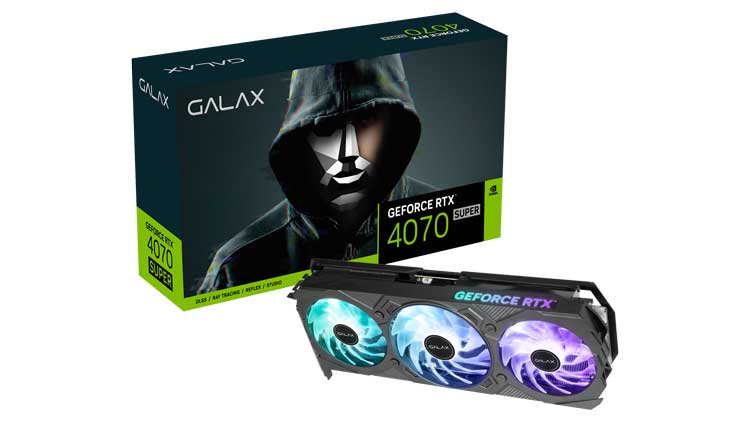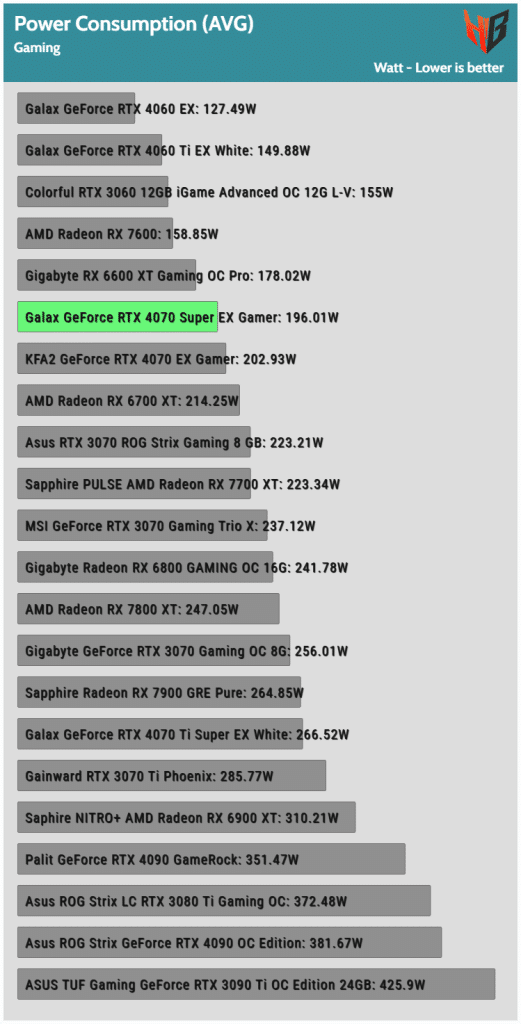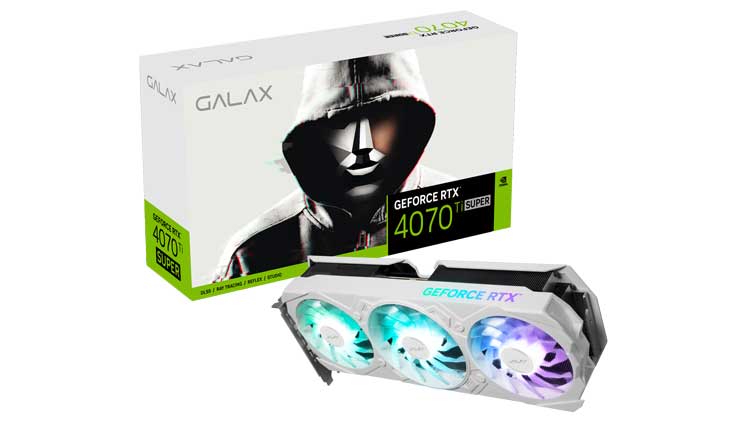Epilogue
GPU reviewing is challenging, especially if you don’t have enough automation to do tedious tasks like game benchmarking. Even with manual control, there can still be issues during benchmarking so that automation can cause even more problems. Thankfully, I have automated the transfer of vast amounts of test results data into graphs, which usually requires many work hours.
The RTX 4070 Super uses the AD104 GPU, as the plain RTX 4070 model, while the RTX 4070 Ti Super uses the AD103 GPU, which also powers the RTX 4080. This means a large performance difference is expected between the RTX 4070 Super and the RTX 4070 Ti Super models. Moreover, the latter also has more VRAM (16 GB vs. 12 GB). Given that the RTX 4070 Super is a QHD and not a 4K card, I don’t believe the 12 GB VRAM will be a notably limiting factor, even in the future. That said, with the current generation games, even “heavy” titles, it performs well, and along with a potent CPU, like the AMD Ryzen 7 7800X3D that I use in my GPU bench system, it will offer strong gaming performance.
Moreover, the modified PCB design of the Galax GeForce RTX 4070 Super EX Gamer, along with its capable cooling solution, offers low operating temperatures and a silent operation, which most users ask for. At the time of the review, I couldn’t find this product in the major US online stores, but I suspect its price will be close to NVIDIA’s MSRP, which is 600 dollars.
I recently evaluated AMD’s reply to the RTX 4070 Super, the Radeon RX 7900 GRE. It has about the same raster performance in QHD titles but loses notably when enabling ray tracing. Moreover, the Radeon RX 7900 GRE requires notably more power than the RTX 4070 Super. It is almost as power-hungry as the RTX 4070 Ti Super, which is notably faster! The strong point of the Radeon RX 7900 GRE is the lower price tag, by 50 dollars, which is on par with the plain RTX 4070, which doesn’t offer such a strong raster performance.
If you ask me what I would do if I were searching for a capable QHD graphics card, I would invest in the RTX 4070 Super, although it is 50 dollars more expensive than the AMD Radeon RX 7900 GRE, because of its much higher performance per watt ratio. The power consumption differences between these two cards are vast.
The next stronger card from NVIDIA’s portfolio is the RTX 4070 Ti Super, which costs notably more at 800 dollars while offering a considerable performance boost, especially at QHD and 4K resolutions. If you don’t want to go as high and need something stronger than the RTX 4070 Super in raster performance, you can also look at AMD’s RX 7900 XT, which currently costs $710. You should remember that the RX 7900 XT is power-hungry, especially compared to the highly efficient RTX 4070 Super, which is among the most efficient graphics cards in today’s market.
NVIDIA remains a strong force in the GPU market, thanks to its efficient GPUs, the highly sophisticated DLSS 3 Frame Generation AI algorithm, and the newer DLSS 3.5 offering Ray Reconstruction, which offers even higher quality ray-traced images. AMD is trying hard to keep up, and it does an excellent job, especially considering that it is a generation behind NVIDIA in developing ray tracing algorithms and the relevant AI performance boost techniques. Still, it follows a very good road, offering broad compatibility for its FSR algorithm, while NVIDIA restricts DLSS to its hardware. I hope that AMD will finally catch up with NVIDIA at some point, leading to increased competition that will favor all our consumers. And let’s not forget Intel, which might be late in the game, but it is a powerful company with many assets at its disposal.
The following table reminds you of the differences between the RTX 4000 series members.
| RTX 4090 | RTX 4080 Super | RTX 4070 Ti Super | RTX 4070 Super | RTX 4070 | |
|---|---|---|---|---|---|
| Architecture | AD102 | AD103 | AD103 | AD104 | AD104 |
| Process Technology | TSMC 5N | TSMC 4N | TSMC 4N | TSMC 4N | TSMC 4N |
| Base Clock (MHz) | 2235 | 2295 | 2340 | 1980 | 1920 |
| Boost Clock (MHz) | 2520 | 2550 | 2610 | 2475 | 2475 |
| VRAM Size (GB) | 24 | 16 | 16 | 12 | 12 |
| VRAM Type | GDDR6X | GDDR6X | GDDR6X | GDDR6X | GDDR6X |
| VRAM Speed (Gbps) | 21 | 23 | 21 | 21 | 21 |
| VRAM Bus Width (bit) | 384 | 256 | 256 | 192 | 192 |
| Transistors (Billions) | 76.3 | 45.9 | 45.9 | 35.8 | 35.8 |
| Shading Units | 16384 | 10240 | 8448 | 7168 | 5888 |
| TMUs | 512 | 320 | 264 | 224 | 184 |
| ROPs | 176 | 112 | 96 | 80 | 64 |
| Compute Units | 128 | 80 | 66 | 56 | 46 |
| Ray Tracing Cores | 128 | 80 | 66 | 56 | 46 |
| TDP (W) | 450 | 320 | 285 | 220 | 200 |
| Launch Month/Year | 9/22 | 1/2024 | 1/24 | 1/24 | 4/23 |
| Street Price ($) | 2000 | 1150 | 840 | 600 | 550 |
The Galax GeForce RTX 4070 Super EX Gamer is the ideal graphics card for a potent gaming system without breaking the bank. You won’t need a powerful and expensive power supply to support it, and thanks to its low energy needs and the good cooling solution, noise output remains low even under intense usage scenarios. Lastly, the card has the newest 12V-2×6 header, which is much safer than the 12VHPWR one, meaning fewer headaches for users (and Nvidia!) Matching this graphics card with an ATX v3.x PSU will be ideal, with the proper high-power cable, and avoid using adapters. You will find the best ATX v3.x PSUs in this article.
- Good price given its features and performance
- Good performance (better than the RX 7900 GRE, especially with RT enabled)
- Highly efficient
- DLSS 3 frame generation provides a notable performance boost
- Silent Operation
- Overclocked from the factory (small margin)
- Notable overclock room
- Good cooling system
- Compact enough dimensions
- Metallic backplate
- HDMI 2.1
- AV1 hardware encode/decode support
- Fan stop feature for lower noise output
- 12V-2×6 power header (enhanced protection compared to 12VHPWR)
- 12+4 pin power adapter is included (but you better use a PSU with a native 12+4 pin)
- 12 GB VRAM can affect performance in some titles
- No DP 2.1 support
- Prologue & Technical specifications
- NVIDIA’s Key Technologies
- Box & Contents
- Part Analysis
- Specifications Comparison
- Test System
- Game Benchmark Details
- Raster Performance
- RT Performance
- RT Performance + DLSS/FSR Balanced
- Raytracing Performance + DLSS/FSR Balanced + FG
- DLSS/FSR Balanced (No RT)
- DLSS/FSR Balanced + FG (No RT)
- Relative Perf & Perf Per Watt (Raster)
- Relative Perf & Perf Per Watt (Raster + DLSS/FSR)
- Relative Perf & Perf Per Watt (RT)
- Relative Perf & Perf Per Watt (RT + DLSS/FSR)
- Relative Perf & Perf Per Watt (RT + DLSS/FSR + FG)
- Rendering Performance
- Operating Temperatures
- Operating Noise & Frequency Analysis
- Power Consumption
- Clock Speeds & Overclocking
- Cooling Performance
- Epilogue







Since it looks like the 40 super series uses the new 12v-2×6 headers, does this mean that ATX 3.0 psus using 12vhpwr won’t have that burning issue? Thanks for all you do.
Nope, there won’t be a problem with ATX v3.0 PSUs because the cable remains exactly the same, and on the PSU side, there weren’t any notable issues.
Thank you for the reply! I’ve been unnecessarily stressed because I got a 4080 super FE and was worried about fire thing as this is my first pc build.